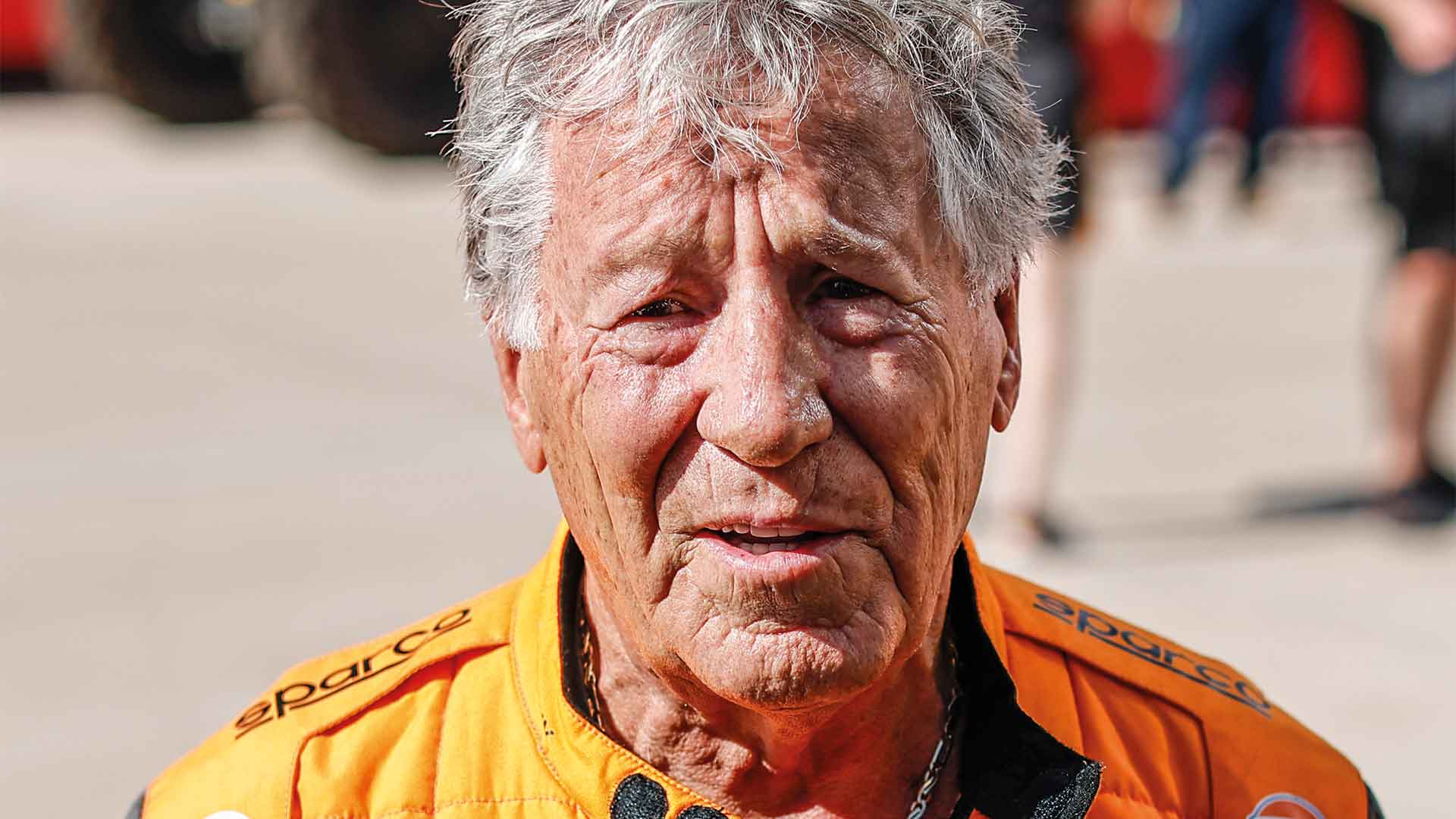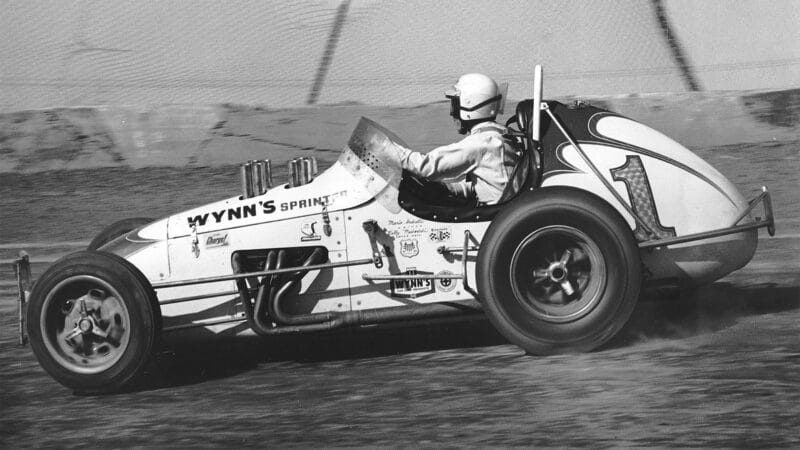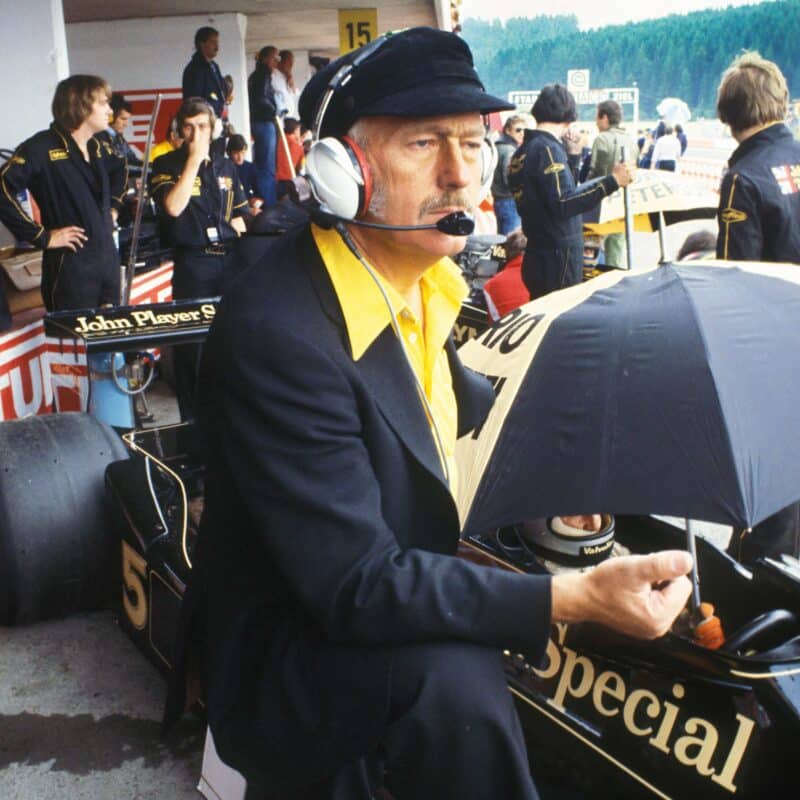As Mario’s early reputation grew, he was offered drives: Stock Cars, then Midgets, then Sprint Cars. “Each dirt track was so different, and each would vary totally during the course of a race. You had to learn to read the surface. It was good training for F1 in the wet later on.” In 1964 he got a strong Champ Car ride with Clint Brawner, who ran the Dean Van Lines team. But Brawner wouldn’t let him make his debut at the notorious Langhorne dirt oval. “In its time Langhorne killed 52 drivers. They used to call it the widow-maker. It was shaped like a big D and you were sideways for three-quarters of the lap, going from lock to lock on the dirt, bunched close at 140mph and steering on the throttle. There used to be a fatality almost every race. One of Brawner’s drivers, Jimmy Bryan, had been killed there. So he wouldn’t run me, gave my car to an older guy called Bob Mathouser.
“But I was young, all piss and vinegar, and I wanted to race. So I picked up a ride in an old car belonging to Lee Glessner. Unlike the decent cars it had no power steering. But I wanted to beat Mathouser and prove a point to Clint Brawner. My mechanic that day was old Tommy Hinnershitz, who’d been a top dirt racer for 30 years. In practice I was so charged with adrenaline I was coming real close to the wall, not really knowing what the hell I was doing.
“So before qualifying Tommy says, ‘Mario, see that post by the entry to Turn 3? No matter how good the car feels, you gotta back off there, set the car up.’ Well, come qualifying I was really on it, and as I came to the post it felt real good. Then I remembered what he said, and I did back off a little bit… and I just barely, barely made it. If I’d gone 10 yards deeper, I woulda gone way out the ball park. They woulda found me in New Jersey. Tommy saved my life that day.
“In the race the surface broke into deep ruts. With no power steering, my hands were hamburger meat by the end. But I passed the Brawner car, finished ninth. It felt good.
“Eventually they paved Langhorne. But it was still tough. It was so quick, and you were turning all the time. You had to feather just before the start-finish line to get through Turn 1. One day I decided to stay flat, thought I’d get it all figured out when I got to the turn. I never did get it figured out, so I crashed after the finish line. But the lap before was a record. It held till they broke up the track for a shopping mall.”
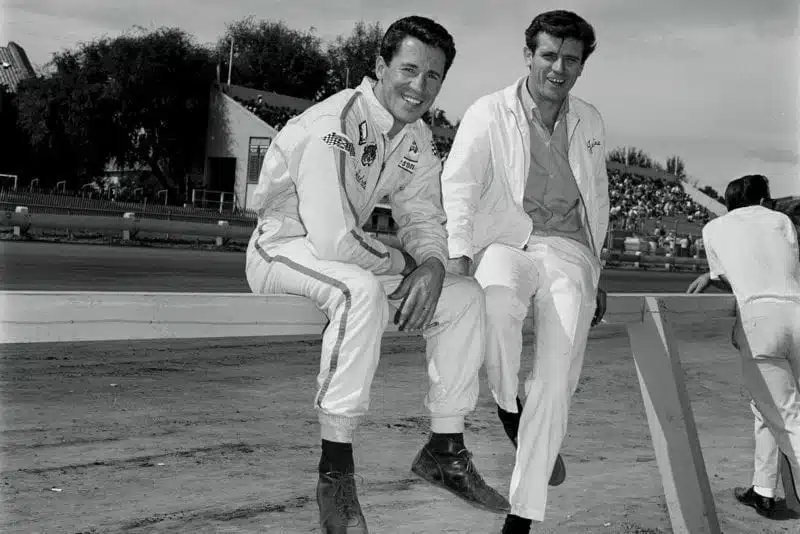
Mario Andretti, left, quickly rose to stardom in his early years
Getty Images
In 1965 Mario ran his first Indianapolis. He qualified fourth and finished third, winning Rookie of the Year, and in the pit lane he met Colin Chapman and Jim Clark. Andretti told Chapman his sights were set on Formula 1. “When you’re ready”, said Chapman, “call me.”
That season Andretti beat AJ Foyt to become youngest-ever National Champion. He was Champion again the next year. Hungry to race anything and everything, he found sports car drives for the NART Ferrari team and then Ford at Le Mans, going on to win the Sebring 12 Hours three times in six years. He ran in NASCAR and Can-Am, too, yet still pursued a full Champ Car schedule, and raced midgets on dirt if he had a free weekend. In 1966 he drove 14 different cars in 51 races, taking 14 victories in four of them. In 1967 he won the biggest NASCAR race of all, the Daytona 500. “Those guys didn’t like an open-wheeler coming down and beating them. Next day a newspaper headline said: South Mourns Andretti Victory.” In 1969 his 4WD Lotus 64 broke a rear hub during Indy qualifying. Mario escaped with slight burns from the huge fiery accident that ensued, switched to his Brawner Hawk, put it on the front row, and won the race. That year brought his third Champ Car championship title.
“I never had any difficulty moving between disciplines. You get in a car, you switch off everything else and you focus on what you’re at. Like I’m doing the Sebring 12 Hours on a Saturday, I fly out Saturday night, Sunday I’m racing a sprint car on a dirt oval. World of difference in the skills required, but the passion’s the same.”
In 1968, three years after their meeting at Indy, Mario made that call to Chapman. He tested the Lotus 49 at Monza, where 14 years before he’d pressed his nose to the fence to cheer on Ascari. At once he was very quick – “I felt like I was born in that car” – and Chapman decided to run him alongside Graham Hill and Jackie Oliver in the Italian Grand Prix. But there was a problem: on the Saturday Mario was contracted to the Hoosier 100 dirt race. So he qualified the Lotus at Monza on Friday, flew to America, did the Hoosier on Saturday, and flew back to Italy, arriving in the Monza paddock on Sunday morning. Then the FIA invoked a rule preventing a driver from racing twice within 24 hours, and Mario was refused permission to start.
Four weeks later at Watkins Glen it was a different story. Mario made F1 history by taking pole for his first grand prix. He was lying second to Jackie Stewart when his nose aerofoils came adrift, and he finally retired with clutch failure, but it was an auspicious beginning. During the next two seasons there were more F1 races for Lotus, and March with Andy Granatelli’s 701, as well as sports car successes for Ferrari. In 1971 Ferrari offered Mario F1 drives when his other commitments allowed. In a fairy-tale debut for the team he won the South African GP, and set fastest lap. Then the Vel Miletich/Parnelli Jones team, for whom Mario ran in Champ Car and F5000, moved into F1 as well, doing a full season in 1975. But the Maurice Philippe-designed car was not a success.
“So 1976 comes along and I’m on the grid at Long Beach, third race of the season, and Chris Economaki puts a mike to me just before the off and says, ‘Mario, how does it feel starting your last F1 race? Vel Miletich just told me he’s pulling the plug on F1 to concentrate on Champ Cars.’
“No-one had said anything to me. I felt real stupid. I was so upset I almost didn’t put the thing in gear. After the race I didn’t even want to talk to them, I just went back to my hotel. Next morning I’m having breakfast all by myself, and Colin’s having breakfast two tables away, all by himself. He’s just had the worst weekend: one of his cars qualified last, and crashed out on the first lap, the other didn’t qualify at all. We look at each other, my chin’s in my socks, he’s even more miserable, and he comes over to join me. So the wheels start rollin’, and he says, ‘Drive for me, Mario.’ I said, ‘But you got a car that may just be slightly quicker than a London bus. We got some work to do here.’ We shook on that. I felt a horizon opening out. I knew Colin could make me World Champion.
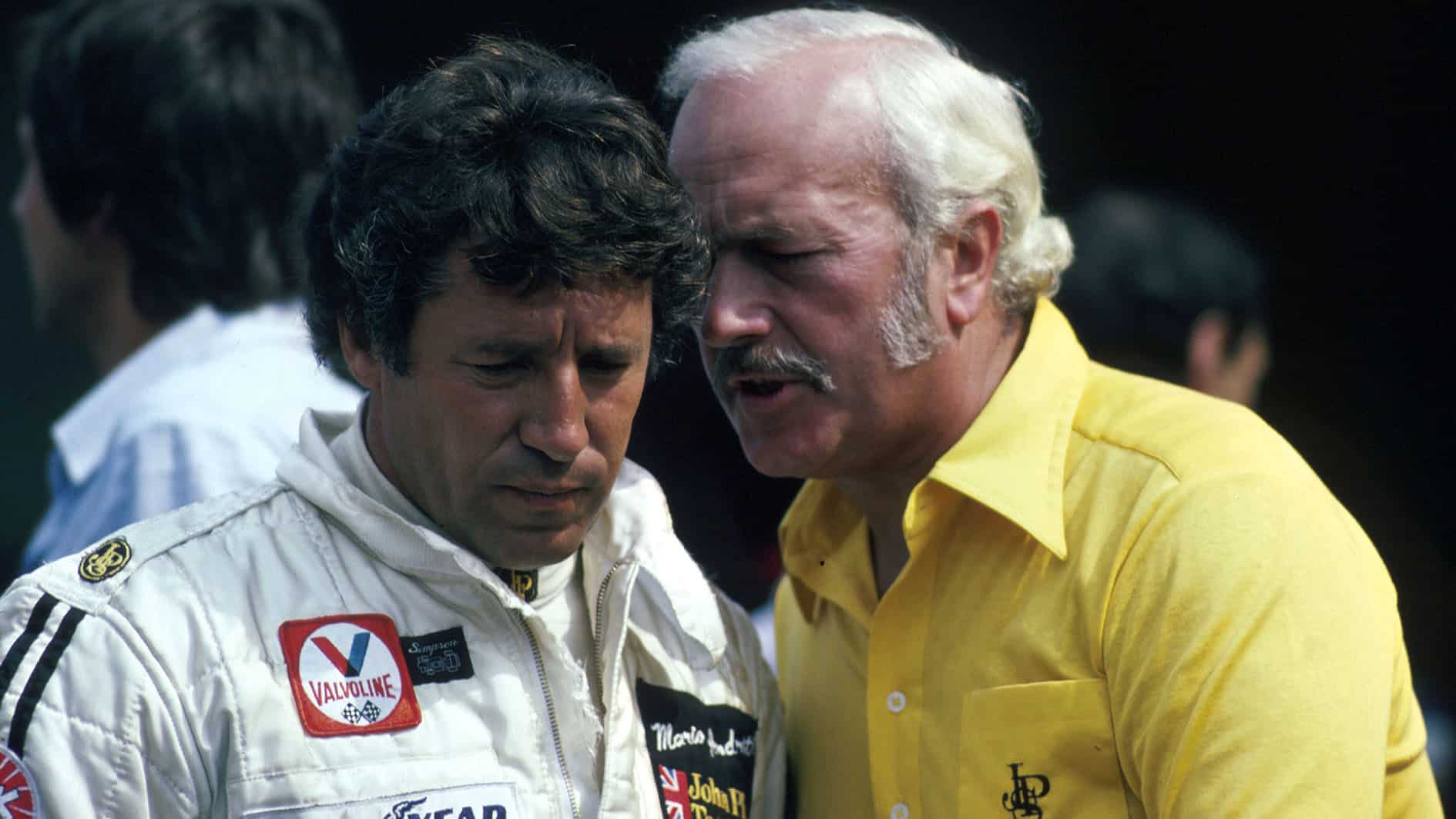
Andretti and the Lotus team suffered tragedy in the midst of triumph at Monza ’78
Hoch Zwei/Corbis via Getty Images
“I called Miletich and said, ‘I’ll never work for you again. And I’m gonna compete against you in Champ Cars.’ He said, ‘We have a contract.’ I said, ‘No we don’t, you’re in breach. Do what you wanna do, sue me.’ Then I called Penske, told him I was doing F1, but I wanted to keep in Champ Car. He said, ‘Whenever you’re available, I’ll have a car for you.’

